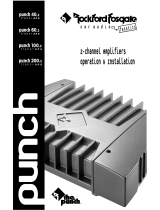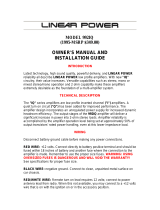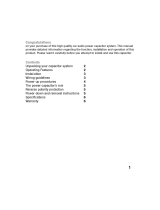
INSTALLATION CONSIDERATIONS
This section focuses on some of the vehicle consider-
ations for installing your new Punch amplifier. Checking
your battery and current sound system, as well as pre-
planning your system layout and best wiring routes will
save installation time. When deciding how to lay out your
new system, be sure that each component will be easily
accessible for making adjustments.
Before beginning any installation, be sure to follow these
simple rules:
1. Carefully read and understand the instructions before
attempting to install the amplifier.
2. For easier assembly, we suggest you run all wires
prior to mounting your amplifier in place.
3. Use only quality connectors for making connections.
See your Authorized Rockford Fosgate Dealer for
Perfect Interface wire enhancements.
4. Think before you drill! Be careful not to cut or drill
into gas tanks, fuel lines, brake or hydraulic lines,
vacuum lines or electrical wiring when working on any
vehicle.
5. For safety, disconnect the battery ground cable prior
to connection of the amplifier.
6. Never run wires underneath the vehicle. The cleanest,
safest wiring connections are made by running the
wire under the carpet or behind the side panels.
Never leave wires exposed.
7. Avoid running wires over or through sharp edges. Use
grommets to protect wires routed through holes in
metal.
8. ALWAYS protect the battery and electrical system
from shorts with proper fusing. A fuse holder and fuse
must be installed within 18” (45.72cm) of the battery
terminal to safeguard from possible damage or injury.
9. When grounding scrape paint off metal to ensure a
good, clean ground connection. Grounding connec-
tions should be as short as possible and always be
9

































